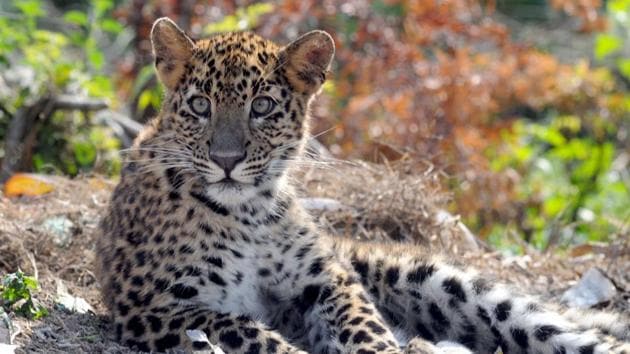Country’s first project leopard coming up in Rajasthan in December
The project will be implemented in three wildlife sanctuaries initially on an experimental basis.
Rajasthan forest department has identified three wildlife sanctuaries to launch in December a pilot project to protect leopard and its habitats, a first-of-its-kind initiative in India.

Earlier the department had identified eight sites for the Project Leopard. But now it has decided to start the project at the three sanctuaries at a cost of ₹21 crore on an experimental basis.
The pilot project will be implemented at Jaisamand Sanctuary (Udaipur), Kumbhalgarh Sanctuary-Raoli Todgarh Sanctuary (stretch of Aravalli Hills extended from Ajmer to Udaipur), and Jhalana Aamagarh Conservation Reserve (Jaipur).
Chief Minister Vasundhara Raje, who also holds finance portfolio, allocated ₹7 crore for the Project Leopard in the budget for 2017-18.
Rajasthan’s additional chief secretary (forest and environment) Nihal Chand Goel said remaining ₹14 crore will be sourced from the Compensatory Afforestation Management and Planning Authority (CAMPA) fund.
The project aimed at conserving the endangered animal by improving its prey base mitigating conflicts with humans and controlling poaching.
According to wildlife census of 2015, in Rajasthan there are only 434 leopards, which is an endangered species under schedule one of the Wildlife Protection Act, 1972.
Around 20 leopards have been killed in the state between 2014 and 2016 in accidents or by humans when the predator strayed into human habitations or agricultural fields. Six people lost their lives in leopard attack between September 2016 and February 2017.
The project borrows its basic features from the Project Tiger launched by the Centre in 1973.
State’s forest minister will be the chairperson of the steering committee of the project. Principal chief conservator of forest will be the vice-chairman. The committee will also have chief wildlife warden as member secretary, and chief conservator of forest, project leopard directors of the selected sanctuaries and experts as its members.
The committee will report to state board of wildlife.
The eight sites originally earmarked for the project covering 1926.80 sq km area are: Jaisamand Sanctuary (Udaipur), Bassi Sanctuary (Chittorgarh), Shergarh Sanctuary (Baran), Kumbhalgarh Sanctuary-Raoli Todgarh Sanctuary (stretch of Aravalli Hills extended from Ajmer to Udaipur), Mount Abu Sanctuary – Sundamata Conservation Reserve (Sirohi and Jalore), Jhalana Aamagarh Conservation Reserve (Jaipur), Jawai Conservation Reserve (Pali) and Khetri Bansyal Conservation Reserve (Jhunjhunu).
Chief wildlife warden GV Reddy said the district forest officials of respective sanctuaries have submitted detailed plans to execute the project.
Due to non-availability of adequate food and water inside forests and protected areas, several animals have started moving into habitations and agriculture fields, causing man-animal conflict.
“The project will mitigate man-leopard conflict, conserve leopard population by countering the threats faced, create goodwill between local communities and leopards. The project will also boost conservation of bears, lesser cats, other smaller mammals and prey species to support leopard conservation,” a senior wildlife official said on conditions of anonymity because he isn’t authorized to speak to reporters.
He said human pressures are exerted on protected areas by grazing livestock, extraction of fodder, timber and non timber forest products, illegal occupation - these lead to human-animal conflict.
“Increasing wildlife population, non-availability of food and water inside forests and protected areas – The conflicts with leopards are generally violent and are on the increase,” he said.
Prey base improvement , Enhancement of water availability, shelter habitat development, control of poaching, awareness generation and eco-development are some of the activities to be given emphasis under the project.
The pilot project will also have a central conflict management command center, which will work as a call center to register a call and use mobile app to implement rescue operations.





